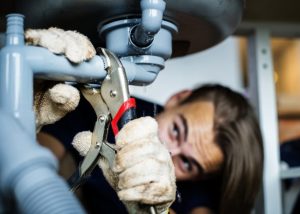How to Examine If Your Residence Has a Surprise Leakage
How to Examine If Your Residence Has a Surprise Leakage
Blog Article
We have stumbled upon this article relating to Leaking water lines down the page on the web and believe it made perfect sense to share it with you here.

Early discovery of dripping water lines can mitigate a potential catastrophe. Some small water leakages might not be noticeable.
1. Check Out the Water Meter
Every house has a water meter. Checking it is a surefire way that assists you find leaks. For starters, shut off all the water sources. Ensure no one will flush, utilize the faucet, shower, run the washing device or dishwashing machine. From there, go to the meter as well as watch if it will certainly transform. Given that no person is utilizing it, there ought to be no motions. That indicates a fast-moving leak if it relocates. Furthermore, if you detect no changes, wait a hr or 2 and also inspect back once again. This implies you may have a slow-moving leakage that might even be below ground.
2. Check Water Consumption
If you detect unexpected changes, regardless of your consumption being the exact same, it indicates that you have leakages in your plumbing system. A sudden spike in your bill shows a fast-moving leak.
Meanwhile, a stable boost monthly, despite the very same habits, reveals you have a slow leakage that's likewise gradually escalating. Call a plumber to extensively check your home, specifically if you really feel a warm location on your flooring with piping beneath.
3. Do a Food Coloring Examination
When it pertains to water intake, 30% comes from bathrooms. Test to see if they are running appropriately. Decrease specks of food shade in the container and also wait 10 mins. If the color somehow infiltrates your bowl throughout that time without flushing, there's a leak between the storage tank as well as bowl.
4. Asses Exterior Lines
Don't neglect to check your outdoor water lines also. Needs to water permeate out of the link, you have a loose rubber gasket. One little leakage can waste loads of water and spike your water bill.
5. Analyze the situation and evaluate
Property owners should make it a routine to examine under the sink counters and also also inside cabinets for any kind of bad odor or mold and mildew growth. These 2 warnings suggest a leak so timely interest is called for. Doing regular evaluations, also bi-annually, can save you from a significant issue.
Examine for stainings and deteriorating as many devices and also pipelines have a life span. If you think dripping water lines in your plumbing system, do not wait for it to rise.
Early detection of leaking water lines can mitigate a possible catastrophe. Some tiny water leaks might not be noticeable. Examining it is a surefire method that helps you discover leaks. One small leak can throw away loads of water as well as surge your water expense.
If you suspect dripping water lines in your plumbing system, don't wait for it to rise.
How to Know If Your Home Has a Hidden Leak
Water Meter Reveals Inexplicable Water Usage
If you’d like to test whether or not there’s a leak somewhere in your home, you can do this using your water meter. Here is how to conduct the test:
Don’t use any water in your home for at least 30 minutes; this also means not turning on faucets or water-using appliances.
Go outside, and check your water meter for activity.
If your water meter shows that there was activity, even though no one was using any water, this proves that there is a leak in your home.Visible Mold or Mildew Growth
Leaks behind walls create moist, dark environments that allow mold and mildew to grow and thrive. Eventually, you might see mold growth forming on the wall closest to a hidden leak.
If mold is growing in an area that receives a high amount of moisture, such as a bathroom, it may simply be an indication that better ventilation is needed. However, if you see mold growth on a wall or the ceiling in an area where you would not expect, you probably have a hidden leak.
Musty, Mildew Odor
Sometimes you might not be able to see the mold or mildew that is growing as a result of a leak. However, the smell can give the problem away just as easily. If you catch a whiff of something musty, there’s a good chance that old water is collecting somewhere in your home that you can’t see.
Stained/Warped Walls, Ceilings, or Floors
When your home soaks up water, a variety of red flags can become visible, including ceiling stains, bubbling drywall, warped walls, and sagging floors. While these issues can be caused by excess humidity, they can also be signs that a pipe or plumbing connection has started leaking behind your walls.
Inexplicably High Water Bill
After a while, you get a general sense for what your water bill should be. If you own a pool or sprinkler system, your bill will tend to be higher during summer. However, if you receive a water bill that seems especially high, and you can’t figure out what caused it, then you may have a hidden leak somewhere that’s increasing your bill.
https://www.plumbingjoint.com/blog/2019/july/how-to-know-if-your-home-has-a-hidden-leak/

As a keen reader on Locating water leaks, I was thinking sharing that excerpt was smart. Kindly take a moment to distribute this blog entry if you appreciated it. I value reading our article about Finding hidden leaks.
Report this page